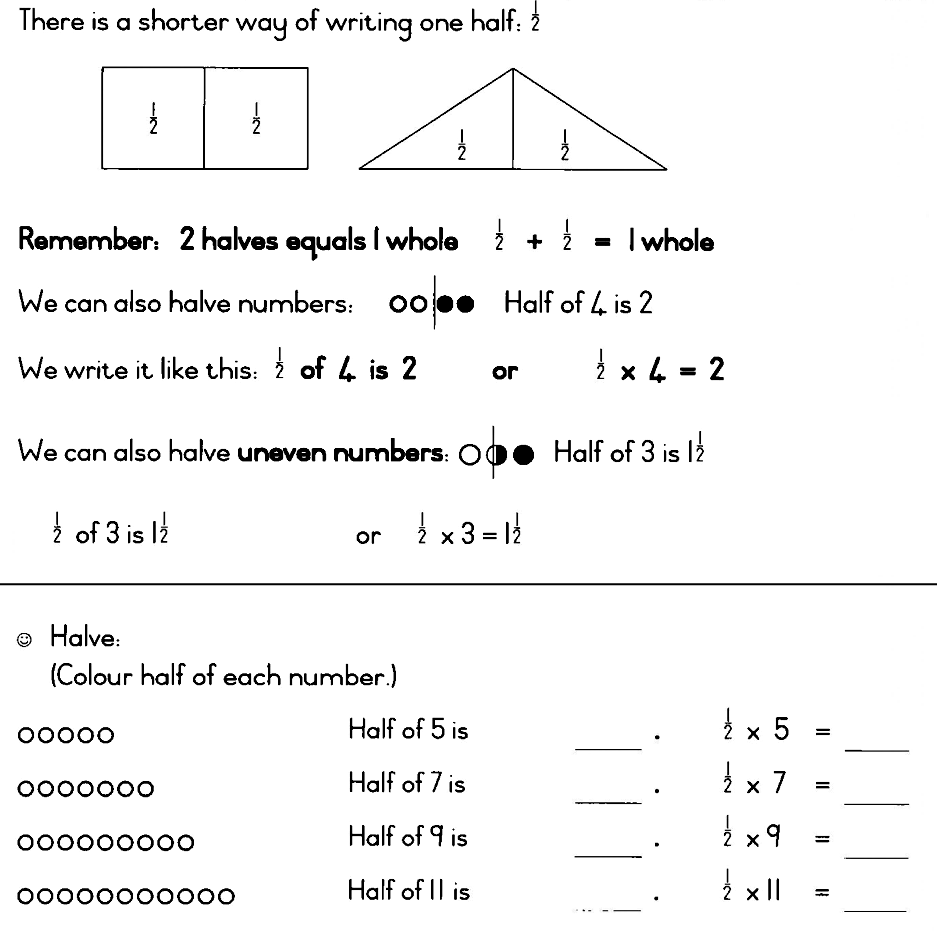| << Chapter < Page | Chapter >> Page > |

Tommy says we must do it without the dots now.
14 - 9 = 14 - 4 - 5 = ___ of 14 - 9 = ( 10 - 9) + 4 = ___
13 - 8 = 13 - 3 - 5 = ___ of 13 - 8 = ( 10 - 8) + 3 = ___
12 - 6 = 12 - 2 - 4 = ___ of 12 - 6 = ( 10 - 6) + 2 = ___
5 - 7 = 15 - 5 - 2 = ___ of 15 - 7 = ( 10 - 7) + 5 = ___
18 - 9 = 18 - 8 - 1 = ___ of 18 - 9 = ( 10 - 9) + 8 = ___
11 - 5 = 11 - 1 - 4 = ___ of 11 - 5 = ( 10 - 5) + 1 = ___




101 * * * * * * * * * * 110
111 * * * * * * * * * * 120
121 * * * * * * * * * * 130
131 * * * * * * * * * * 140
141 * * * * * * * * * * 150
151 * * * * * * * * * * 160
161 * * * * * * * * * * 170
171 * * * * * * * * * * 180
181 * * * * * * * * * * 190
191 * * * * * * * * * * 200
1. 150 + 1 = _____
2. 160 - 1 = _____
3. 111 + 4 = _____
4. 155 - 4 = _____
5. 180 + 10 + 1 = _____
6. 190 + 5 + 4 = _____
7. 160 - 5 + 4 = _____
What do you see? ______________ How many shapes do you see?_____
Name them. _____________________________________________
Draw a line that will halve the shapes. Colour in half of every shape.
How many shapes do you see now?
Name them._____________________________________________
How many sides are there to a:
a triangle ______ , a square ______ and a rectangle ______ ?
How many angles are there to a:
a triangle ______ , a square ______ and a rectangle ______ ?
Below is an illustration of the box in which Bonny and Tommy’s pencils were packed. They wanted to know what shapes were used in making this box, so they opened it up like this.

____________________________________________________________________
____________________________________________________________________
The sides of a square ___________________________________________________
The sides of a rectangle _____________________________________________
____________________________________________________________________
Today Bonny and Tommy got only half an apple each. Their mother had only 1 apple, but she divided it very carefully so that both parts were exactly the same size . She halved it.


Each one got______________________________________.
Solve the problems in the way you prefer. You may draw them.
Each one got______________________________________.
Each ribbon will be____________________________.
He must drink _____________________________________ each day.
There were ______________________________________________.
3 ½ + 3½ = ____
5½ + 5½ = ____
10½ + ½ = ____
12 +2½ = ____
Learning Outcome 1: The learner will be able to recognise, describe and represent numbers and their relationships, and to count, estimate, calculate and check with competence and confidence in solving problems.
Assessment Standard 1.1: We know this when the learner counts forwards and backwards in:
1.1.1 the intervals specified in grade 2 with increased number ranges;
Assessment Standard 1.6: We know this when the learner solves money problems involving totals and change in rands and cents, including converting between rands and cents;
Assessment Standard 1.8: We know this when the learner can perform calculations, using appropriate symbols, to solve problems
Assessment Standard 1.9: We know this when the learner performs mental calculations;
Assessment Standard 1.10: We know this when the learner uses the following techniques:
1.10.1 building up and breaking down numbers;
1.10.2 doubling and halving;
1.10.3 number-lines;
1.10.4 rounding off in tens
Learning Outcome 3: The learner will be able to describe and represent characteristics and relationships between two-dimensional shapes and three-dimensional objects in a variety of orientations and positions.
Assessment Standard 3.1: We know this when the learner recognises, identifies and names two-dimensional shapes and three-dimensional objects in the environment and in pictures;
Assessment Standard 3.3: We know this when the learner observes and creates given and described two-dimensional shapes and three-dimensional objects using concrete materials (e.g. building blocks, construction sets, cut-out two-dimensional shapes, clay, drinking straws).

Notification Switch
Would you like to follow the 'Mathematics grade 3' conversation and receive update notifications?